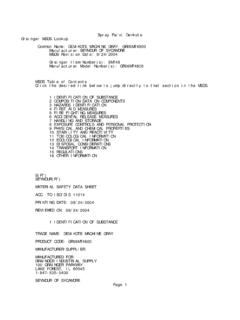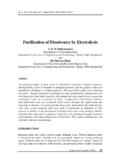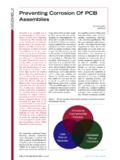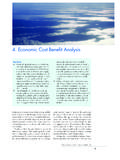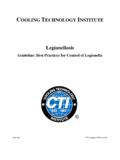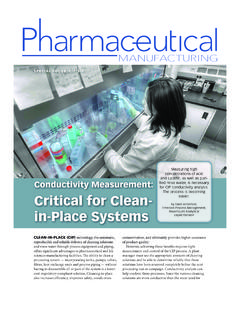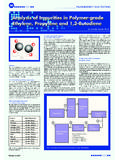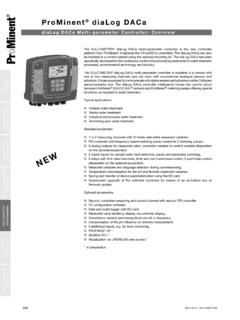Transcription of MATERIAL SAFETY DATA SHEET - Upper River …
1 MSDS 1632c Page 1 of 4 MATERIAL SAFETY data SHEET 1. SUBSTANCE AND SOURCE IDENTIFICATION National Institute of Standards and technology SRM Number: 1632c Standard Reference Materials Program MSDS Number: 1632c 100 Bureau Drive, Stop 2300 SRM Name: Trace Elements in Coal Gaithersburg, Maryland 20899-2300 (Bituminous) Date of Issue: 11 March 2008 MSDS Coordinator: Mario J. Cellarosi Emergency Telephone ChemTrec: Telephone: 301-975-6776 1-800-424-9300 (North America) FAX: 301-926-4751 +1-703-527-3887 (International) E-mail: Description: This Standard Reference MATERIAL (SRM) is intended primarily for use in the evaluation of techniques employed in the analysis of coals and materials of a similar matrix.
2 A unit of SRM 1632c consists of 50 g of bituminous coal ground to pass a 250 m (60 mesh) sieve, homogenized, and bottled under an argon atmosphere. Substance: Coal Powder Other Designations: Coal Powder (bituminous coal; ground bituminous coal). 2. COMPOSITION AND INFORMATION ON HAZARDOUS INGREDIENTS Component: Coal Dust (complex mixture) CAS Number: 8029-10-5 EINECS: Not assigned. Concentration (Mass %): 100 NOTE: This MATERIAL contains organic and inorganic compounds incorporated in the coal matrix (sulfur, mercury, quartz, and chlorine), which have been reported to have toxic, mutagenic, and/or carcinogenic properties, and should be handled with care.
3 The concentration of these compounds is below the reportable limit: hazardous components (1 %); carcinogens ( %), required by OSHA, 29 CFR (g)(2)(i)(C)(1), for MSDS information. EC Classification: Not classified. EC Risk (R No.): Not assigned. EC SAFETY (S No.): Not assigned. EC Risk/ SAFETY Phrases: See Section 15, Regulatory Information 3. HAZARDS IDENTIFICATION NFPA Ratings (Scale 0 4): Health = 1 Fire = 1 Reactivity = 0 Major Health Hazards: Cancer (in humans). Physical Hazards: Dust/air mixtures may ignite or explode.
4 Potential Health Effects: Inhalation: Irritation, chest pain, difficulty breathing. Skin absorption: Irritation. Eye contact: Irritation, eye damage. Ingestion: Irritation. MSDS 1632c Page 2 of 4 Listed as a Carcinogen/Potential Carcinogen Yes No National Toxicology Program (NTP) Report on Carcinogens X International Agency for Research on Cancer (IARC) Monographs X Occupational SAFETY and Health Administration (OSHA) X 4. FIRST AID MEASURES Inhalation: If adverse effects occur, remove to uncontaminated area.
5 If not breathing, give artificial respiration by qualified personnel. Seek immediate medical attention. Skin Contact: Rinse affected area with soap and water for at least 15 minutes. Seek medical assistance if necessary. Eye Contact: Immediately flush eyes, including under the eyelids, with copious amounts of water for at least 15 minutes. Seek immediate medical attention. Ingestion: If a large amount is swallowed, seek medical attention. 5. FIRE FIGHTING MEASURES Fire and Explosion Hazards: Slight fire hazard.
6 Dust/air mixtures may ignite or explode. Extinguishing Media: Regular dry chemical, carbon dioxide, water, regular foam. Fire Fighting: Avoid inhalation of combustion by-products. Flash Point ( C): Not applicable. Method Used: Not applicable. Autoignition Temp. ( C): Not applicable. Flammability Limits in Air Upper (Volume %): Not applicable. LOWER (Volume %): Not applicable. 6. ACCIDENTAL RELEASE MEASURES Occupational Release: Collect spilled MATERIAL in appropriate container for proper disposal. Disposal: Refer to Section 13, Disposal Considerations.
7 7. HANDLING AND STORAGE Storage: Store and handle in accordance with all current regulations and standards. Safe Handling Precautions: See Section 8 Exposure Controls and Personal Protection . 8. EXPOSURE CONTROLS AND PERSONAL PROTECTION Coal Dust: OSHA (TWA): mg/m3 (quartz, total dust) OSHA (TWA): mg/m3 (quartz, respirable dust) ACGIH (TWA): mg/m3 (quartz, respirable fraction) UK WEL (TWA): mg/m3 (quartz, respirable particulate) Ventilation: Local exhaust ventilation system. Respirator: If necessary, refer to the NIOSH Guide to the Selection and Use of Particulate Respirators Certified under 42 CFR 84 for selection and use of respirators with organic vapor cartridges certified by NIOSH.
8 Eye Protection: Wear SAFETY goggles. An eye wash station and drench shower should be readily available near the handling and use areas. Personal Protection: Chemically resistant gloves and clothing are recommended. MSDS 1632c Page 3 of 4 9. PHYSICAL AND CHEMICAL PROPERTIES Component: Coal Dust Appearance and Odor: Black powder, odorless. Molecular Formula: Not applicable. Density (g/cm3): to Water Solubility: Soluble. 10. STABILITY AND REACTIVITY Stability: X Stable Unstable Stable at normal temperature and pressure.
9 Conditions to Avoid: Avoid generating dust. Avoid contact with incompatible materials. Incompatible Materials: Oxidizing materials, metals, metal salts, halogens, combustible materials, reducing agents, bases, acids. Fire/Explosion Information: See Section 5, Fire Fighting Measures . Hazardous Decomposition: Oxides of carbon. Hazardous Polymerization: Will Occur X Will Not Occur 11. TOXICOLOGICAL INFORMATION Route of Entry: X Inhalation Skin Ingestion Coal Dust Toxicity data : May cause irritation and a cough.
10 Health Effects: See Section 3: Hazards Identification for potential health effects. Target Organs: Respiratory tract. Medical Conditions Generally Aggravated by Exposure: Any individual with a chronic pulmonary disorder should protect against exposure to coal dust. 12. ECOLOGICAL INFORMATION Ecotoxicity data : Not applicable. 13. DISPOSAL CONSIDERATIONS Waste Disposal: Dispose in accordance with federal, state, and local regulations. 14. TRANSPORTATION INFORMATION DOT and IATA: Not regulated.
